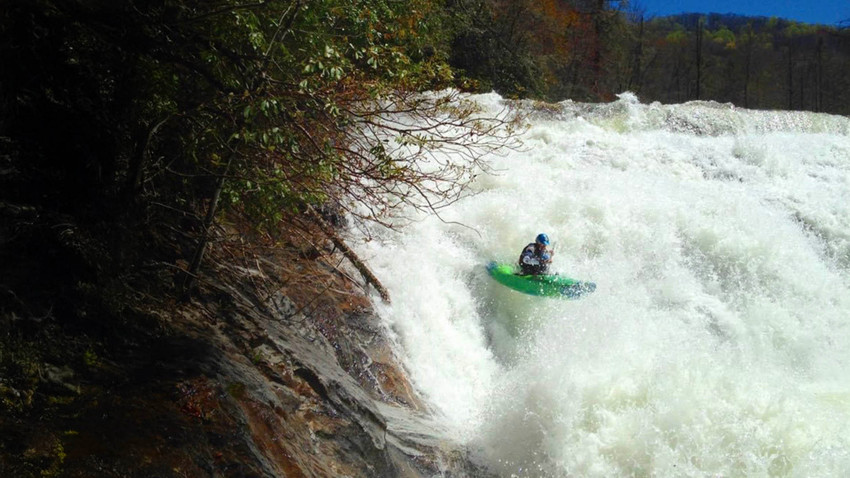White Water Kayaker and Arborist Phil Dennison uses Silky Saws to Keep Steep Creeks Clear
Arborist and white water kayaker Phil Dennison from Brevard, North Carolina, owns several Zubat 330s. It’s a tool he relies on daily in his work as an arborist. “I use the Zubat for tree work because the blades are easy to get hold of — all the arborist suppliers have them, and the 330 is a good size for all the tasks I need to do,” says Dennison. “The fixed-blade Zubat isn’t too aggressive for fine pruning, but it’s aggressive enough that I can cut a two to three-inch tree branch efficiently. It’s also got a sturdy scabbard that holds the saw securely. It straps to my leg where I can get to it easily even when I’m in a tree.”
Dennison is a career arborist and a lifetime whitewater kayaker. He says that in Brevard, many kayakers carry Silky saws when they’re boating to clear downed trees and for rescue.
“A lot of rivers around here are tree-lined and natural flow,” says Dennison. “We can only get on them in or right after heavy rain. So we’re routinely paddling class V runs that haven’t been paddled in several months. There can be a lot of trees across a river — kayakers call them “strainers” — which can make a river impassable, and which can pin a kayaker who tries to navigate through without clearing the blowdown.”
Hemlocks are the primary perpetrators. Many are victims of wooly adelgidan, an invasive, aphid-like insect. Dead hemlocks fall across or into the creeks that they border when it rains or in high winds.
“When my run is blocked, I use my Zubat to cut the tree out of the way,” says Dennison. “Some of the creeks we paddle end up as narrow gorges that are only accessible by boat. So walking around is tough; cutting out a tree or two is often faster. If you’re the first person on a river around here, the likelihood of interacting with some wood while you’re paddling is high.”
Whitewater kayakers also carry saws for rescue. Dennison says he’s happy to report that he hasn’t needed to use his saw for that, though he once sawed a broken boat in half with his Silky during the warranty process. The manufacturer required him to show proof that the boat was destroyed before they’d process the claim.
Dennison straps his Zubat to his boat with the saw’s scabbard, which he clips to the bulkhead behind his seat. “There are some pretty decent anchor points behind the seat; they’re pretty robust for holding stuff in the boat,” says Dennison.
While most of Dennison’s fellow boaters use a folding saw for kayaking, Dennison runs what he brung. “I use what I use for work because I already own it,” says Dennison. He’s never lost a saw but says that sometimes people drop their saw into the river because their hands are cold.
Paddling season in North Carolina is year-round. In November, paddlers flock to Brevard from all over the U.S. and all over the world for a race on the dam-released Green River Narrows. The natural flow season is in the winter and spring, or any time the rains are heavy. “We can run steep creeks at low volumes,” says Dennison, “around 700 feet per second, because the creek channels are so narrow. Some are only six to eight feet wide with serious drops. When it rains overnight, we hit them before work. It’s mostly Class V rivers, and most of the boaters are going places you can only access by kayak.”
Dennison says that the majority of boaters he sees carry a Silky. “The rest carry saws that rust up in five minutes as soon as they’re wet,” says Dennison. “That’s just one more thing I love about my Silkys. I don’t ever intentionally leave my saw sitting in water, but if I do, it’s not the end of the blade as it would be with many other saws.”

